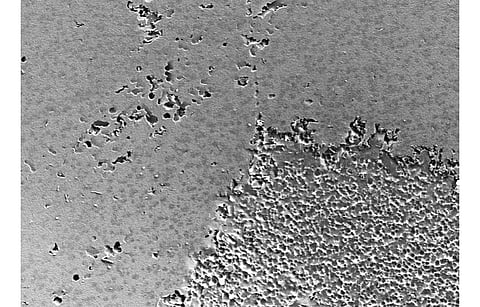

Chemical cleaning may have its benefits for solar modules in terms of keeping soiling at bay, thereby ensuring consistent performance, but there is a high risk of them causing significant damage to panel performance. The Fraunhofer Center for Silicon Photovoltaics CSP says it has developed a test method to understand the material compatibility of such cleaning agents and their impact on modules.
The German research institute used its newly developed method to test the components of standard PV modules following existing standards, including the aluminum frame with anodized coating, the silicon edge seal and the PV glass with anti-reflective coating.
It subjected the components to an aging test in the cleaning solution, mainly to make statements about pitting and surface corrosion.
Researchers found that it is mainly the anti-reflective layer on the front glass of the modules that is at risk with these chemical cleaning agents and cleaning additives, thanks to their acidic or alkaline nature.
The Deputy Manager of the "Diagnostics and Metrology Solar Cells" group at Fraunhofer CSP, Dr. Marko Turek explained, "The investigations conducted to date show that many commercially available cleaners, even at the recommended application concentration, damage the PV module components, especially the anti-reflective coating layer on the solar module front glass."
Turek added that users aren't aware of this aspect of the cleaning agents they use for their modules, thus suffering associated energy yield losses.
The department now says it may cooperate with corrosion protection products manufacturer Bremer & Leguil GmbH to provide recommendations for the number of cleaning cycles, the exposure time and the ideal application concentration. "In this way, its biodegradable cleaning agent Rivolta P.H.C. could be optimized in terms of material compatibility," it added.
